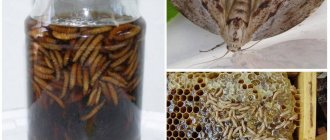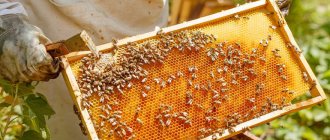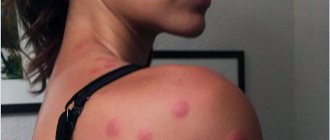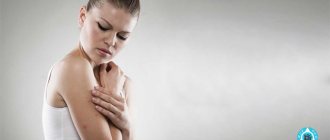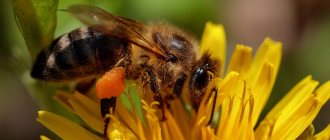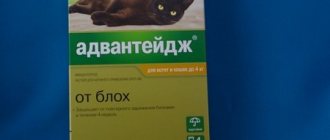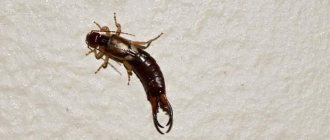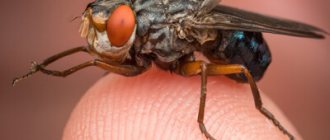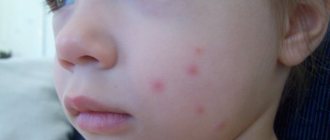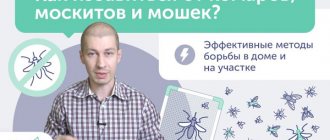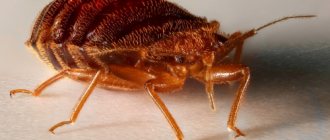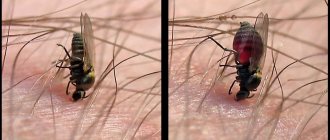It is difficult to find a person who has not experienced a bee sting in his life. Unpleasant burning sensations, pain, unbearable itching and swelling are manifestations of the poison that is introduced at the moment of the insect bite at the tip of the sting. A bee attack that results in a sting is usually fatal to the enraged bee. During the attack, the female drives the sting so tightly into the human skin that she is unable to remove it back. As a result, it comes off, and along with it a significant part of the insect’s intestine, which leads the individual to inevitable death. In this way, females protect themselves and their nests in times of danger. However, along with the pain and frustration, a bee sting comes with enormous health benefits. It is how treatment with bee stings is used in medicine that will be discussed in this article.
Consequences of a bee sting
Bee venom contains important components, including calcium, phosphorus, and magnesium. The content of phosphoric and hydrochloric acids, proteins and fats makes the poison useful. However, the poison produced by insects is also somewhat dangerous, given the presence of biologically active substances in it. Substances that cause harm to bee venom:
- Melitin. A toxin characterized by strength and speed of destructive action. It is capable of damaging and destroying red blood cells, as well as causing disruption of the body's metabolic processes at the cellular level. This releases components that promote inflammation.
- Histamine. A component that causes an allergic reaction, and therefore swelling, respiratory spasm, a sharp decrease in pressure, and dilation of blood vessels.
- Phospholipase. A substance that destroys cell walls and membranes.
- Apamin. An element of poison that provokes stimulation of certain parts of the nervous system.
- Hyaluronizade. An enzyme that destroys the hyaluronic complex that makes up the connective tissue, this manifests itself in the rapid growth of the tumor.
When bitten on the head and face, the most severe consequences are observed - inflammation of the eye membranes, eyelids, and respiratory problems. In childhood, the reaction to bee venom is more pronounced. However, despite the presence of harmful components, bee venom has a beneficial effect on the body. With the help of apitherapy, many diseases can be cured. The substances that make up the poison simultaneously have a healing effect on the body:
- Reduction of inflammatory processes, analgesic effect;
- Activation of the endocrine system and immunity;
- Fighting germs and other microorganisms that cause harm;
- Beneficial effect on heart function and blood microcirculation;
- Restoration of bone tissue and improvement of the nervous system.
- Anti-radiation and anti-coagulant effect, etc.
Apitarapia is carried out according to a certain scheme, which cannot be violated. Starts with one bite a day, the next day 2, and so on. Then countdown.
How to extract and prepare bee venom?
A special complex has been developed for the mass production of this bee product. It consists of a poison-selection frame, an electric current circuit control unit and a battery. The poison collection unit consists of two blocks of wood 1.4 cm thick, with a recess in the middle for a supporting aluminum plate 2 mm thick, measuring 435x290 mm \the length of the upper wooden block is 470 mm and the bottom is 435 mm. A wire of thickness is pulled vertically through the bars of the frame 0.2 mm in a spiral with a distance between turns of 5 mm. In total there should be 59-60 contact turns. The wire is fixed to the upper beam, and voltage is applied to them. Two glasses are inserted into the grooves of the frame on both sides of the supporting duralumin plate. The conductor should be at a distance of 2 mm from the glass. A current source is needed with a supply voltage of 12 V and a power consumption of 9 W, with a frequency of 1.0 +0.1 Hz and an output voltage of 0.7 V.
As a battery, you can take a 12 V car battery, it will last for 6-8 hours, after which it needs to be recharged. The device for collecting bee venom is installed in the hive between the outer honeycombs, one on both sides. The distance between adjacent honeycombs and the poison collection frame must be more than 20 mm. The installation for collecting poison is turned on in the afternoon, after 16 hours, lasting up to 3 hours.
With increasing exposure time to bees, there is a danger that they will die. A bee runs through a poison-sampling frame and is exposed to electricity. The bee stings from the electric impulse, and the poison remains on the glass. This drop dries out quickly. The frames are removed from the hive and taken to a special room where dried bee venom is collected from the glass. The dry substance is placed in sterile dark glass vials with ground-in stoppers and marked on the label: “Raw bee venom” collected, date of collection and mass of pure product. Store raw bee venom at +20-25 degrees.
After cleaning the glass of the poison sampling frames, they are washed with water, then degreased with alcohol and they are ready for use. If you work using this technology every two weeks, it will not harm the bee colony, there will be a lot of brood and honey. You can start collecting in the spring when the family gets stronger, and after the main honey collection.
Bite symptoms
You need to know the main manifestations of the reaction to bee venom in the body. Immediately after the bite, chills, headache and dizziness occur, the heart rate increases, pain in the heart appears, blood pressure decreases, shortness of breath appears, and nausea may also be present. In some cases, the person loses consciousness. First aid for a bee sting includes removing the sting to reduce the amount of poison entering the body. Tweezers that have been previously disinfected are suitable for this.
About the benefits of a bee sting
A bee sting can not only cause harm, even death, but also help in the treatment of diseases.
Bee venom contains amino acids (up to 90% of their composition is in demand in the human body) and protein substances; consists of phosphorus and magnesium, calcium and copper, carbon and hydrogen, phospholipids and glucose. All components actively affect the human body:
- Hydrochloric and formic acids can dilate blood vessels and lower blood pressure.
- Peptides ensure the activity of hormonal, protein, fat, mineral and water metabolic processes in the body, thereby providing an invaluable contribution to health.
- The enzyme protein, on the contrary, stimulates a person’s sensitivity to the composition of the poison and poses a threat to allergy sufferers due to the consequences of anaphylactic shock or Quincke’s edema.
Wasp, bee sting: first aid
The area around the wound should be washed with soap, potassium permanganate solution, or treated with alcohol. Ice or a cold compress is suitable to reduce swelling at the site of the injury. Just in case, to avoid a possible allergic reaction, it is advisable to take an antihistamine. Drinking plenty of fluids significantly speeds up the removal of toxic substances from the body. If an allergy occurs, you should immediately consult a doctor.
The use of healing qualities in medical practice
Oncologists claim that mellitin , as a component of the bee venom molecule, destroys the body's cells with minimal toxicity in comparison with other drugs known to medicine. Therefore, treating cancer with apitoxin is effective; a bee sting slows down the growth of malignant cells and formations.
Histamine is another component of the poison. In the cardiological field, there is no more effective natural remedy in the fight against atherosclerosis and hypertension. It dilates blood vessels and reduces cholesterol levels in the blood. Hypertensive patients are guaranteed recovery.
Thanks to peptides and gerutin , blood clots dissolve, blood viscosity decreases, the level of blood supply to the extremities increases, pain and swelling in the legs disappears even after a long walk. Beekeeping products are successfully used by phlebologists in the treatment of varicose veins, allowing them to achieve positive dynamics without surgical intervention.
Neurologists also successfully use apitherapy for diseases of the nervous system . Acupuncture methods provide stable remission for osteochondrosis and neuralgia, thanks to the antispasmodic effects of the components of the poison. Self-medication is not recommended in order to avoid harmful consequences, since a positive result is possible only if the insect bite hits the required point on the patient’s body.
According to rheumatologists, the poison, acting on the nervous system, helps to heal even advanced forms of rheumatism.
Preparations containing bee venom effectively treat eye inflammation . This is how ophthalmologists cope with keratitis, conjunctivitis, iritis, iridocyclitis, etc., using eye drops based on a bee product.
It is popular to use physiotherapeutic treatment for psoriasis. Electrophoresis with bee secretions on various zones and systems of the body provides a regenerating effect on diseased skin, successfully treats not only psoriasis and its manifestations, but also other dermatological problems, and even eliminates traces of scars and scars.
Beekeeping products can not only cause exacerbations in allergy sufferers, but with the help of poison they can overcome bronchial asthma. The peculiarity of the application is the use of regular minimum daily doses, which are administered to the patient in the chest area. Thanks to this method, bronchospasm can be minimized.
Hornet sting and its consequences
The bite of this large wasp is no more painful than when attacked by other wasps. The puncture of the skin at the site of the sting is almost no different from that made by a bee. With one bite, inflammation occurs in the surrounding tissues, and with several, allergies and general intoxication of the body occur. The consequences can be a severe blow to health.
The most dangerous consequence of a hornet sting is Quincke's edema. With large-scale swelling of the larynx and pharynx, a person practically cannot breathe. This can even lead to the death of the victim. Common complications caused by hornet venom are hives, fever, nausea, fever, fainting, changes in blood pressure, fever, discomfort or pain in the heart and chest.
How to treat bee stings
Treatment with bee venom
Apitherapy includes various types of treatment, including the use of drugs prepared on the basis of bee venom.
Bee sting
The process itself is quite simple and not much different from natural insect attacks. A live bee is picked up with tweezers and brought to the surface of the skin, where it stings. The treatment regimen for bee stings is drawn up on an individual basis. The duration of the healing process can be up to 1.5 months, during which up to 200 stings are carried out. Up to 40 insects are used in one session, and you should start with one bite, gradually increasing their number.
The procedure is carried out no more than 2 times a week. The sting is removed from the skin after a quarter of an hour so that the bee toxins can be absorbed into the blood as much as possible. The consequences of a bite are allergies in the form of redness, swelling and burning. Over time, this process becomes addictive, as a result of which the unpleasant sensations become less pronounced.
On a note!
This method of treating bee stings has two main disadvantages: pain upon contact with the insect and lack of control over the amount of poison injected by the pollinator of flower plants into the human body.
Injections
The procedure differs from the one described above in the absence of pain. Treatment is carried out by injecting purified poison under the skin near the affected area of the body or diseased organ. The dosage, frequency of procedures and course duration are selected individually. In addition, the nature and stage of the disease, as well as the patient’s weight and the presence of concomitant pathologies, should be taken into account.
Inhalations
This procedure involves inhaling toxic fumes, through which the healing components enter the human body through the lungs. Absorbed into the bloodstream, they spread throughout the body and have a healing effect on it.
Treatment with bee venom
Pills
Used to treat radiculitis, as well as neurological diseases. The tablet is kept under the tongue until it is completely absorbed. It is not recommended to swallow the drug, as this can lead to disruption of the gastrointestinal tract.
Cream
One of the simplest and safest methods of apitherapy is the use of a cream or ointment based on bee venom. The product has a gel-like consistency and is applied to the affected area of the skin with gentle massaging movements. The duration of treatment depends on the individual characteristics and degree of the patient’s disease.
First aid for a hornet sting
First of all, you need to carefully examine the wound. If the sting breaks off and a piece remains in the skin, it must be removed as quickly as possible. If possible, at least silent poison should be squeezed out of the wound in order to reduce the dose of poison in the body. After this, it is necessary to disinfect (the most effective and appropriate would be to use salicylic alcohol, but ordinary alcohol or a weak solution of pink potassium permanganate will also work). Fresh cucumber or lemon juice will have a beneficial effect on the affected area. It is also recommended to apply ice to the swollen area.
Antiallergic drugs will help cope with a possible reaction to the poison. After this, it is recommended to go to a medical facility or call a doctor at home. The poison of this insect poses a danger to many organs and systems of the body, especially with several bites, so qualified medical care will be indispensable even in the absence of alarming symptoms.
The doctor determines the severity of the condition of the hornet victim and then applies special drugs necessary to neutralize the toxins. If the airways are swollen, an injection of adrenaline may be required. In some cases, after a hornet sting, anaphylactic shock occurs. In such situations, the doctor performs plasmapherosis or infusion. In any case, vascular drugs will be very effective, which will reduce the load on the cardiovascular system and will help restore the walls of blood vessels after a chemical attack by insects. To minimize the negative consequences of an attack by stinging insects, you need to know how to act in such situations and not lose composure.
Contraindications
Considering the toxicity of bee venom, it is not surprising that apitherapy with its use has contraindications. First of all, they concern people with individual intolerance to the substance and a tendency to allergic reactions, which may well lead to the development of anaphylactic shock and death. In addition, people suffering from chronic diabetes, tuberculosis, pathologies of the liver, kidneys and pancreas should not use this method of treatment .
If, after the first insect bite, severe redness and swelling of the skin is observed, and the body temperature begins to rise above acceptable values, treatment with this method is definitely not suitable for you and you should look for other ways to eliminate unpleasant symptoms and the very cause of the disease.
Did you know? In search of pollen, one bee flies about 12 hectares of territory per day, but at the same time brings no more than 200 g to the hive in 10 flights.
What diseases does it help with?
What diseases do bee stings help with?
Bee sting - how to relieve swelling
After familiarizing yourself with the general methods of apitherapy and the concept of “how a bee sting is useful,” it is recommended to find out for what diseases and in what areas of medicine this technique helps:
- Oncological diseases.
- Cardiology.
- In the treatment of varicose veins.
- Neurology.
- Prostatitis.
- Rheumatism and radiculitis.
- Bronchial asthma.
- Treatment of eye diseases.
- Dermatology.
The therapeutic potential of this exotic therapy has not been fully studied, and it has not received proper approval from official medicine. But a clear example of the beneficial effects of bee stings are beekeepers, among whom more than 80% are long-lived.
0 0 votes
Article rating
Treatment of radiculitis
Most often, apitherapy is used to treat the lumbar region. Bee venom has a positive effect on the patient's condition after several stings. How does therapy work?
Experts recommend adhering to the following plan:
- It is necessary to apply bees for 15 days. Every day the number of insects must be increased by one individual;
- Bite sites are best targeted on the upper and lower extremities. These areas are characterized by accelerated reactions of metabolic processes;
- It is necessary to apply bees from the left shoulder. After this, move the insect one by one to the hip area.
This scheme reduces the contact of bee venom with the previous sting site. Three days have passed since the last manipulation. It is prohibited to place a bite in the same place. After 10 days you need to take a break for 2 days.
What treatment regimens for bites are used?
- For hypertension, according to experts, the effective place for a bite is the lumbar region and the place behind the ears;
- For eye disease, effective bite points are in the temple area;
- For urinary incontinence in childhood, insects are applied to the abdomen (2.5 cm below the navel);
- For trophic ulcers, the bees are planted next to the wound, 5 centimeters away from it, taking into account the location of the nerve;
- For uterine fibroids, treatment of prostatitis and impotence associated with this disease is carried out by bee stinging of the popliteal area and the perineal area;
- If the functions of the thyroid gland are impaired, 4 insects are planted on both sides of it and two stings are made on the lower back.
- Treatment of arthritis and arthrosis of the joints is carried out by planting bees directly on the sore spot, 5-10 insects at a time. But there should not be more than 4 bites per joint. Stings are especially effective for gout and gouty arthritis. Full treatment requires up to 200 bees.
- For bronchial asthma, the collar area is affected, starting with four bites, one is added every day.
- When treating angina, bees are placed to bite the left shoulder and back (in the projection of the heart), up to 5 insects at once.
The bee sting procedure is quite specific and painful, so not everyone decides to try it on themselves, even despite the guaranteed positive effect.
There are many people who are terrified of bees and do not let them near them under any pretext. But lovers of these insects resort to apitherapy only as a last resort. As you know, a bee can sting only once in its life, after which it dies instantly.
